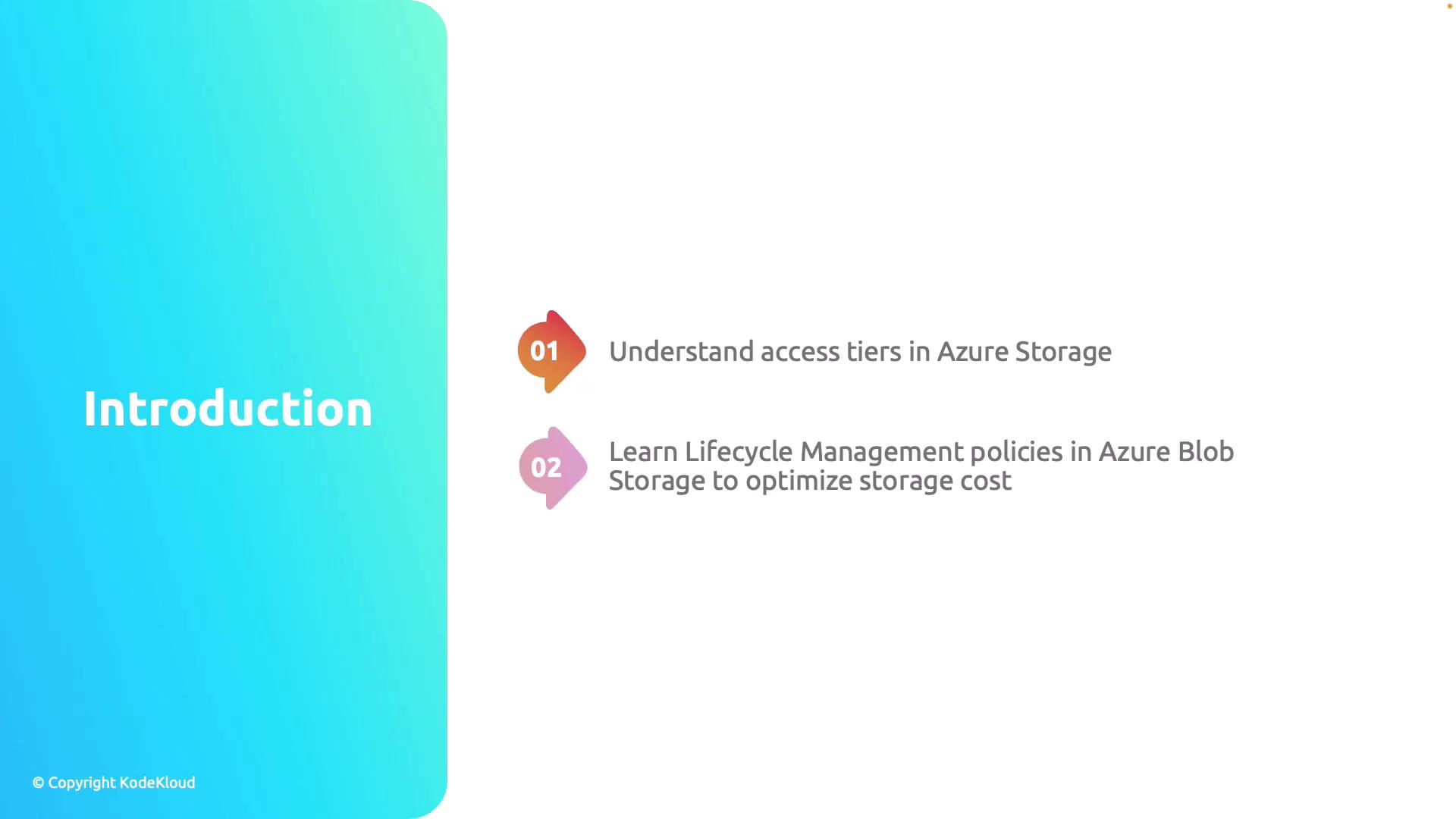AZ-204: Developing Solutions for Microsoft Azure
Managing Azure Blob Storage Lifecycle
Introduction
In this article, we dive into two essential components of Azure Blob Storage that help optimize your storage costs: access tiers and lifecycle management. Understanding these features is key to efficiently managing data storage based on access frequency and cost.
Access tiers enable you to store data in Azure Blob Storage at different price points according to access frequency. Frequently accessed data is maintained in a higher performance tier, ensuring low latency, whereas data that is rarely accessed can be moved to a more cost-effective storage tier.

Lifecycle management takes optimization a step further by automatically transitioning blobs between access tiers or deleting them after a specified period. This automation not only streamlines data management but also significantly reduces unnecessary storage expenses.
Note
For more detailed information on Azure Blob Storage features, be sure to explore the official Azure Documentation.
In the following sections, we will explore:
- The functionality and benefits of different access tiers.
- How to implement and configure lifecycle management policies to maximize cost savings.
By understanding and configuring these features, you will be able to optimize your storage costs while ensuring the accessibility and performance required by your applications.
Watch Video
Watch video content